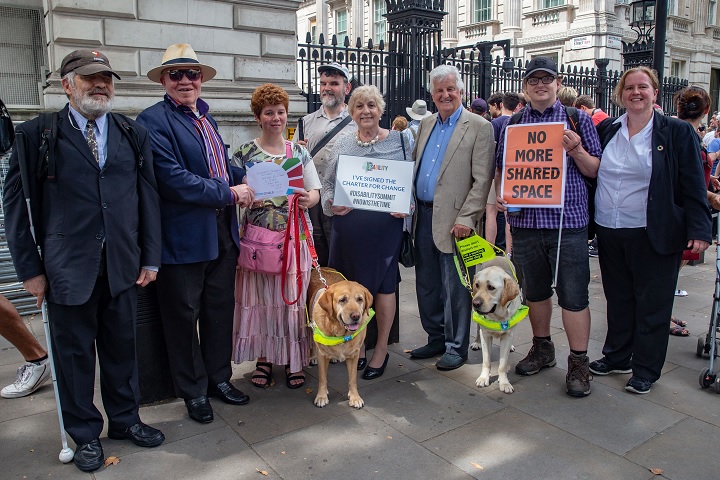
Blind people are being ‘progressively excluded from their town streets’ as a result of shared space road design, it has been claimed.
Shared space schemes – where features such as kerbs, road surface markings, designated crossing places and traffic signs are removed – have been introduced in a number of town centres in recent years.
Shared space is intended to create a safer road environment – based on the theory that drivers will reduce their speed because of uncertainty over who has priority.
However, shared space is not without controversy, with concerns regularly raised about how the schemes adversely affect the safety and mobility of blind and disabled pedestrians.
In July 2018, the Government told local authorities to pause the development of shared space schemes while it reviews and updates its guidance – before relaxing this advice the following month.
The National Federation of the Blind UK (NFBUK) – which has regularly expressed concern about how Government is managing the issue – is now urging new prime minister Boris Johnson to bring a complete halt to shared space road design across the UK.
On 24 July, NFBUK submitted a petition to 10 Downing Street – backed by approximately 200 UK charities – pressing for an independent inquiry into shared space design principles.
The petition calls for ‘a world where blind, deaf-blind, visually impaired, disabled, young and older people, and people with mobility and cognitive impairments, do not have to share space with moving vehicles on the road please’.
Andrew Hodgson, president of the NFBUK, said: “We are asking Boris Johnson for his support and to bring a complete halt to shared space road design in the UK.
“Creating urban areas that are safe and accessible for all to use independently just makes economic and social sense.”
The petition includes an endorsement from Lord Chris Holmes, the blind ex-Paralympic swimming champion who is now a representative of the Equality and Human Rights Commission.
Pedestrians Presumption of being safe and therefore not paying attention to what is happening around them is a contributory factor to collisions involving pedestrians and vehicles. It is not unheard of for people to be run over and seriously injured in public places like car parks and the like.
Guzzi, Newport
+6
A comparison might be large car parks around supermarkets, retail parks etc. where motor vehicles mingle with pedestrians informally. There is not usually a speed limit, however the nature of the environment causes drivers to be cautious and slow and pedestrians to wander into the path of vehicles in the presumption that the vehicles are moving too slowly to be a danger. That’s not to say that there will never be any contact and no doubt there have been incidents – hopefully minor. Having said that, Broughton Retail Park near Chester has a posted ’19’ mph speed limit plus traffic humps, but I don’t know if that has guaranteed no ‘collisions’.
Hugh Jones
--3
Pat
Part of the infrastructure in other countries are 30km/h speed limits. Many would not consider shared space schemes without a 30km/h limit for the complete urban or village area. There is the presumption that low speeds must be adhered to in such an environment.
Its the UK culture of 30mph (60% higher than 30km/h) being OK in an environment where motor vehicles mix with cars which endangers blind people. This is at odds with all the messages from WHO, ETSC, OECD, iRAP, SWOV, etc that 20mph or 30km/h is the maximum safe speed where motor vehicles are allowed to mix with people.
This culture is changing in the UK as more and more of our authorities recognise that 20mph is the correct limit where people are. This together with increasing compliance from ISA and the wider enforcement by police will assist turning that cultural change into a behavioural change.
Rod King, Lymm
--5
In my opinion the theory that drivers will reduce their speed because of uncertainty over who has priority is a flawed concept in the UK in road safety terms alone. I know some of these shared space schemes work in other countries but as I have said before, you can’t copy an idea from elsewhere without considering the differences in the cultures involved. Add the “Equalities” perspective into the mix and the case against shared space should be enough to stop any that are not heavily regulated/policed/engineered.
Pat, Wales
+5